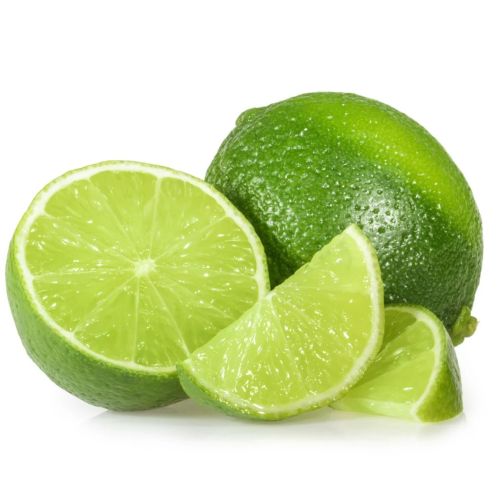Categories
Other Pages
- Age on other Planets
- Aliens
- American Flag
- Annuals
- Avoiding Scams
- Awareness Ribbons
- Baileys Liqueur
- Bananas
- Banana Tree, Grand Nain
- Banana Tree, Ice Cream
- Banana Tree, Zebrina Rojo
- Beekeeping
- Bleach
- Boogaloo
- Bookmarks
- Bullying
- Cats
- Chillicothe Businesses
- Christmas Tree
- Ciroc Vodka
- Coffee Pods
- Color Codes Chart
- Consumer Resources
- Consumer Resources - Elders
- Credit Score Checkers
- Credit Scores
- Death Checklist
- Disaronno Amaretto
- Donation
- Drug Test
- Eye Teasers
- Fonts
- Foods To Regrow
- Friend
- Funny Things
- Fun Stuff
- Giving
- Growing Blueberries
- Halloween
- Halloween Treats
- Hello!!
- Home Bar
- House Plants
- Hunger Facts
- Interesting Facts
- Kinds of Tea
- Lucky Bamboo
- Macaroni!!
- Missouri
- Missouri Prisons
- National Foundations
- Never Forget
- New Page Soon
- One Little Rose
- Orchid Growing
- Orchid Sources
- PayPal.Me
- Perennials
- Phobias A-Z
- Plant Care
- Plant Zone Map
- Propagating Plants
- Ragtime Music
- Recipes I like
- Roses
- Sadie & Beethoven
- Scam Calls
- Smile
- Speed Test
- Spices You Need
- Spices I Have
- State Trees
- Superstitions
- Symbols
- Tequila Rose
- The Ten Commandments
- Top Alcohol
- Top Animated Movies
- Top Comedy Movies
- Top Expensive Movies
- Toyota Yaris 2008
- Toyota Yaris 2012
- Tree, Calamondin Orange
- Tree, Meyer Lemon
- Tree, Persian Lime
- US Bill of Rights
- US Constitution
- US Declaration of Independence
- UV Vodka
- Weight on other Planets
- Wine Clubs
- Wines
- Wines - Missouri
Needed to read PDF's
Persian Lime
(Bearss)
Citrus X Latifolia

The Persian Bearss Lime Tree has a spreading form, nearly-thornless drooping branches, broad green leaves, purplish young shoots and white blooms. This lime tree is a prolific fruit bearing tree. The Bearss lime has a distinct spicy aroma and a tasty savory blend of lime and lemon minus the bitterness or acidity.
Citrus Latifolia, also known by other common names such as a Persian Lime Tree, Bearss Lime Tree, or Tahiti Lime Tree is a member of the family Rutaceae with a tri-hybrid genetic composition of Pomelo (Citrus maxima or Citrus grandis), Citron (Citrus medica), and Micrantha (citrus).
The Persian Lime tree is an evergreen, vigorous tree that can grow 15 feet to 20 feet tall when planted in ground, with width of 5 feet to 10 feet wide when it reaches maturity. The Persian “Bearss” lime tree is a citrus tree that does well in warm climates but can survive cold temperatures; the dwarf lime tree can be grown in a pot if you live in colder areas. It is cold-hardy with recorded USDA plant hardiness zones 8-11.
This citrus tree has a spreading form, nearly-thornless drooping branches, broad green leaves, purplish young shoots and white blooms. The Bearss lime tree is a prolific fruit bearing tree that produces limes that are almost the size of lemons.
The seedless Bearss lime fruit has a dark to pale green rind that is smooth and thin. The skin is tightly clinging to the flesh of the fruit and has a characteristic thin nipple on the blossom end. Bearss lime has a distinct spicy aroma unique to its citrus kind and a tasty savory blend of lime and lemon minus the bitterness or acidity. Each lime fruit weighs about 2 ounces while half of that weight is juice.
The Persian Bearss lime tree is the most widely produced and cultivated lime tree commercially and accounts for the largest share of fruits sold as limes in the United States.
Details
Genus
Citrus
Species
latifolia
Variety
'Bearss'
Zone
Outdoors:
9 - 11, Indoors: 2 - 11
Bloom Start To End
Early Spring
Habit
Upright
Plant Height
10 ft - 15 ft
Plant Width
15 ft - 20 ft
Additional Characteristics
Edible, Fragrance
Bloom Color
White
Foliage Color
Dark Green
Light Requirements
Full Sun, Part Shade
Moisture Requirements
Moist, well-drained
Soil Tolerance
Normal, loamy, Sandy
Uses
Border, Containers, Cuisine, Ornamental, Specimen
Restrictions *Due to state
restrictions they cannot be shipped to the following:
Canada, Arizona, Guam, Hawaii, Florida, Puerto Rico, Virgin
Islands, Texas, Alaska, Alabama
| Genus | Citrus |
| Species | latifolia |
| Variety | 'Bearss' |
| Zone | Outdoors: 9 - 11, Indoors: 2 - 11 |
| Bloom Start To End | Early Spring |
| Habit | Upright |
| Plant Height | 10 ft - 15 ft |
| Plant Width | 15 ft - 20 ft |
| Additional Characteristics | Edible, Fragrance |
| Bloom Color | White |
| Foliage Color | Dark Green |
| Light Requirements | Full Sun, Part Shade |
| Moisture Requirements | Moist, well-drained |
| Soil Tolerance | Normal, loamy, Sandy |
| Uses | Border, Containers, Cuisine, Ornamental, Specimen |
Restrictions *Due to state restrictions they cannot be shipped to the following:
Canada, Arizona, Guam, Hawaii, Florida, Puerto Rico, Virgin Islands, Texas, Alaska, Alabama
Nutrition Facts
For 1 medium Persian Lime (67g)
| Nutrient | Value | %DV |
| Calories | 20 | 0% |
| Fats | 0g | 0% |
| Saturated fats | 0g | 0% |
| Trans fats | 0g | 0% |
| Cholesterol | 0mg | 0% |
| Sodium | 0mg | 0% |
| Carbs | 7g | 3% |
| Net carbs | 5g | 0% |
| Fiber | 2g | 7% |
| Sugar | 0g | 0% |
| Protein | 0g | 0% |
| Vitamins & Minerals | ||
| Calcium | 0mg | 0% |
| Iron | 0mg | 0% |
| Potassium | 0mg | 0% |
| Vitamin A | 0μg | 0% |
| Vitamin C | 21mg | 23% |
| Vitamin D | 0μg | 0% |
| Sugars | ||
| Sugar | 0g | 0% |
Citrus Tree Care
Growing a Persian lime is easy as long as you provide it with the proper care; here are some requirements that will help your lime tree thrive:
- Provide your lime tree with full sun, for at least six hours.
- Ensure your tree is given enough water and proper drainage.
- Plant in an area with good organically rich soil or in a container with quality potting soil.
- Fertilizer is not necessary but will improve the tree's health.
- Keep your lime tree in a warm spot at 60-90 degrees Fahrenheit.
Light
Sunlight is essential; your tree will produce as much fruit as possible and stays healthy in an area with full sun. Planting your tree in a sunny location is a great idea, but this is extra important for potted plants.
Soil
The lime tree enjoys rich soil loaded with organics that feed the tree with the necessary nutrients. At the same time, the soil needs to be moist, but well draining. Test your soil before planting and amend it as necessary.
Water
Give your lime tree plenty of water and keep the soil consistently moist to get the juiciest fruit possible. Use a soaker hose to keep the soil moist under the tree's canopy to a depth of 2 inches. When the soil is dry to the touch, water again. When you plant your tree, more frequent water is needed until it has established itself.
Temperature and Humidity
Lime trees are native to tropical areas, so recreating similar conditions would be ideal. Keep your lime tree in a warm area; they do not do well in cold conditions. Strictly adhering to the recommended USDA zones of 9 through 11 is your best bet.
Fertilizer
A Persian lime will do fine without feeding, but adding a fertilizer to your care regimen will increase the tree's vigor and fruit production. Fertilize your tree with an NPK formulation in a ratio of 2:1:2 three times a year. You can find citrus fertilizers with this formula at most garden centers. Apply in early winter, late spring, and mid summer.
Pollination
Unlike many fruit trees, you will not have to worry about planting two lime trees for pollination. The lime tree is self-pollinating, and there is no real increase in yield seen when multiple trees are present.
Types of Lime Trees
The Persian lime is the most commercially available lime in the world—and what you find in the supermarket. There are also a few other species that are grown for culinary purposes:
- Kaffir Lime (Citrus hystrix): Kaffir lime is another very popular lime tree that produces much less fruit and is less hearty.
- Key Lime (Citrus × aurantiifolia): A small, tart lime tree that produces limes used mostly for baking, the key lime tree is the third most popular lime commercially.
- Philippine Lime (Citrus × microcarpa): This lime tree is a hybrid between the kumquat and mandarin orange.
- Rangpur Lime (Citrus limonia): The rangpur lime is a popular hybrid of the citron and the mandarin orange.
Fruit & Harvesting
Fruit
Flowers are followed by berry (hesperidium), oval, obovate, oblong or short-elliptical, usually rounded at the base that is 4 to 6.25 cm (1.5 to 2.5 in) wide and 5 to 7.25 cm (2 to 3 in) long, often with nippled or elongated ends, generally seedless or few-seeded. Fruits are initially vivid green to pale yellowish green and yellow when fully ripe. The fruit has thin, leathery skin dotted with oil glands. Pulp is pale greenish in 10 segments, tender and acid. The pollens are not viable. The fruit has a fragrant, spicy aroma and tart flavor, but the aroma and flavor are less intense than those of key lime. The advantages of the Persian lime in commercial agriculture compared to the key lime are the larger size, absence of seeds, hardiness, and absence of thorns on the bushes, and longer fruit shelf life that have combined to make it more widely cultivated. It is also widely available dried, as it is often used this way in Persian cooking. It is larger with less intense citrus aromatics than the key lime.
Harvesting
Persian limes are harvested 8 to 12 times a year with 70 percent of the produce maturing from May to fall. The peak period is generally from July to September. Harvesting is mostly done by hand, but some use a tool called a ‘gig” to collect the fruits.
Since Bearss limes are green when ripe or unripe, telling when it is time to harvest can be somewhat confusing, with a narrow window for the perfect ripeness. Essentially, if you harvest the fruit too early there will be deficient juice and does not have its distinct lime flavor, but if collected later, it will be sweet and may not have the lime flavor you are looking for.
Limes that are harvested for commercial purposes are usually dark green. However, the optimal time to pick this fruit is when the dark green skin has lightened up a little bit or when you see specks of pale green in areas of the fruit skin. Another way to tell if the fruit is ripe is by lightly squeezing it. If the fruit is unripe it would not give and will feel solid to the touch while a ripe fruit would give a bit when squeezed.
But of course, the ultimate test to determine the readiness of the Bearss lime fruit is by tasting it. Gently twist one fruit from the stem and cut it open. If the juice content is about 40% or more and has the spicy citrus lime taste, then it is the right time to harvest those limes from your tree. Once collected, you can keep the fruit in good condition for up to 8 weeks under refrigeration without curing.
How to Grow Lime Trees in Containers
Growing a lime tree in a pot allows you to move the tree to the area that receives the most sun, is the most convenient location for watering, and is not as prone to cold temperatures that can damage the plant. A potted lime tree requires a bit more care than an in-ground lime tree. Here's how to care for it:
- Choosing a pot: Use a pot with drainage holes that are considerably bigger than your tree to give it room to grow. Select a good quality organic potting soil and add a mix of organic compost. Aim for a ratio of 5:1. This mixture will give your lime plenty to feed on and limit the need for much supplemental fertilizer.
- Location: Place your lime tree in a sunny place. If you decide to keep it indoors, you may need to add a grow light to supplement the lighting. A broad spectrum grow light will best mimic the light you need for an abundant harvest.
- Watering: Potted lime trees will need their water needs monitored closely as the container they are placed in can impact the soil's ability to hold moisture. The soil should be consistently moist.
- Temperature: If the temperature in your area goes below 50 degrees, you should bring your lime tree inside during the cold months.
Pruning the Lime Tree
Your lime tree will require very little pruning since it grows very slowly. Your biggest concern will be looking for damaged, dead, or dying branches. When the tree gets some height to it, it is a good idea to prune to allow for easy harvest, but this may be a job best done by a certified arborist since a mature lime tree will require a ladder to reach the top.
Propagating a Lime Tree
The Persian lime is a seedless variety, so the only option to propagate a lime tree is by taking cuttings. While this is possible, it is not recommended. You may get a viable tree that produces some fruit, but it won't be as healthy or successful as a purchased sapling.
The common lime tree is a variety that is grafted onto the heartier rootstock of the bitter orange (Citrus aurantium). This species is highly disease resistant compared to the Persian lime and is much more tolerant of cooler temperatures. It is therefore a much better idea to buy a commercially sold lime tree. Your tree will be healthier, produce more, be more vigorous, and live longer.
Pests and Diseases
There are a couple of pests that could cause major problems for Bearss lime tree.
There is the citrus red mite and broad mite that could heavily infest the Persian lime leaves and fruit causing the leaves to have necrosis, prematurely fall and dieback.
There are biological (Euseius stipulatus) and chemical (pesticides) controls you can use to effectively regulate or prevent widespread colonization of citrus and broad mites.
Persian lime trees can also suffer from black sooty mold caused by aphid infestation. Aphids alone can cause minimal damage. However, they excrete a sticky substance called honeydew that the black sooty mold feeds on. Black sooty molds can hinder the tree growth and kill the leaves.
To stop the growth of black sooty molds, you need to stop the spread of aphids. You can either use a concoction of mild household detergent mixed with water or use pre-mixed insecticidal soap. Another method to get rid of aphids is to encourage the nesting of bug eating birds like chickadees and wrens.
Scales and leaf miners are another citrus tree pest to look for, and they can cause serious harm to your lime trees. Getting rid of these 2 pests is imperative to make the plants look better and improve their overall health. The most common method to rid your plant of leaf miners is the use of pesticide. You can also use horticultural oils or a biological control like Diglyphus isaea. a parasitoid wasp, which you can buy from reputable nurseries.
Scales can be controlled by disposing of infected branches, twigs or leaves. You can also buy natural predators like ladybugs and lacewings that prey on scales while it is in the larval or crawler stage. There are also horticultural oils and insecticidal soaps you can use to control scales.
FAQ's
Can I grow a lime tree indoors?
You can grow a lime tree indoors, so long as it is a dwarf variety. Otherwise, it would likely not be able to fit in your home.
Do I need to plant two lime trees to get fruit?
You do not need to plant two lime trees to get fruit since lime trees pollinate themselves already.
Do lime trees need full sun?
As a tropical tree, lime trees need full sun. It will be its healthiest and produce the most fruit if given full sun.
Can I grow a lime tree from a store-bought lime?
Lime trees are produced via grafting, so there is no real way to prudence a lime tree from a store-bought lime.
Find me on Social Media
 |
Don't forget to bookmark me to see updates.. Copyright © 2000 - 2025 - K. Kerr Most recent revision November 19, 2025 07:05:35 AM
|











